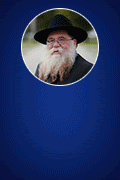
Students Learn Recipe to Chabad’s Secret Sauce
If the worldwide Chabad-Lubavitch movement was a guest invited to your wedding, where would it sit? Too religious for your friends. Too freewheeling for the kosher side of the family. Too big for the small-town Federation sorts. You’d gnaw through your manicure before finding it a seat where it would fit with the others.
Chabad isn’t easy to peg. Trying to locate Chabad-Lubavitch on the spectrum of Jewish life stymied Jewish education researchers at Avi Chai, too. The Avi Chai census of Jewish day school students grouped schools according to their corresponding stream of Judaism, whether Reform, Solomon Schechter, Modern Orthodox, and so on. There was even a category for Chasidic, but that didn’t work, either. Chabad schools attract longtime Chasidic families, novice orthodox, and the marginally affiliated alike, making it hard to lump Chabad into the more exclusive Chasidic check-box. And so, Chabad schools got their own category, which showed a nice wave of population growth, by the way.
Students of Brandeis University’s Hornstein Jewish Professional Leadership Program ran up against a similar dilemma when they considered Chabad’s place among the big boys of the Jewish organizational world. In a classroom scenario, the twelve Hornstein students are working toward an MA in Jewish Professional Leadership with a related MBA or second MA in tandem, hit a wall when they tried to figure out how Chabad would work with other organizations to engage the unaffiliated.
Because Chabad is so hard to peg “it is a source of ambivalence for other organizations,” said Ira Blum, a Hornstein scholar and son of a Conservative rabbi.
Understanding how Chabad ticks is important for future Jewish organizational leaders precisely because of its paradoxes, according to Mark I. Rosen, a Hornstein assistant professor and director of field experience programs. He said the wider Jewish organizational world once figured that without the charismatic leadership of the Rebbe, Chabad would just quietly go away. The opposite scenario played out; Chabad is now too big a worldwide force to ignore. The collective non-profit Jewish world is now attempting to unravel how Chabad rabbis who “show up with hats and beards are appealing to people with no affiliation or background? What is Chabad’s secret sauce?”
When the group tromped out to New York for their trip to visit major Jewish organizations last week, they arrived at Chabad-Lubavitch World Headquarters well primed with questions. The visit kicked off an intense four days of politely nibbling on pastries and slurping chilled bottle water as leaders of the American Jewish Committee, the Jewish Federations of North America, Birthright Israel, and other heavyweights described their own missions, challenges, and visions.
Blum came to 770 Eastern Parkway having had tasted the breadth of Chabad’s worldwide welcome at Shabbat dinners during his travels through India and Italy. But he wondered how a movement that so relied upon the leadership of one man could sustain growth nearly two decades since his passing. Meeting with the Jewish Educational Media directors in charge of the project to digitize and organize video of the Lubavitcher Rebbe’s speeches told Blum that the movement is deeply committed to the further study and interpretation of the Rebbe’s teachings. Observing educators behind the virtual, online school for the children of Chabad representatives helped him understand how Chabad children stay committed when they grow up far from a densely Jewish community.
A fellow Hornstein scholar, Yana Tolmacheva, grew up in the Russian-Jewish community of Sheepshead Bay, a 20-minute drive from Chabad-Lubavitch World Headquarters. But for all Tolmacheva knew of Chabad, it might as well have been in Moscow.
While other students asked about Chabad’s business model and drilled Chabad’s executive director Rabbi Yehudah Krinsky for the reality behind various myths about Chabad, Tolmacheva took note of Chabad’s technological savvy, its leaders’ open answers to tough questions and their trademark non-judgmental approach.
“I was wondering if I could feel comfortable or if I would feel intimidated,” said Tolmacheva. “But I saw that I can have a real conversation with them. I feel the distance between us has kind of been shortened.”
Batya Lisker of Lubavitch Headquarters, coordinated the Brandeis tour and guided the students on the day-long excursion through the various central divisions of Chabad-Lubavitch.












well, duh!
funny. I was sure the secret sauce was smirnoff
DeClasse- Intellectual
Aimple secret comes from Perkei Avos and Rabbi Akiva: And, the Rebbe was the prime example of this–Avhas israel and respect for every individual, and then to treat everyone that way and not to ignore the proper respect even though they are not lilke him. A famous story, a mother was visiting her three sons at the Yeshiva in 770 and the Rebbe before he was Rebbe saw them talking to their mother. He went over and got a chair for her to sit down. End of message and end of story.
ur always students
hey Mrs. Lisker spotted!!!…u were the best principal ever cuz u really cared so much about every single one of us and u were always there for us. hard if not impossible to replace. we luv u and miss u always.
Local Friend
Batya, I really enjoy seeing you on the sites, doing important things. I also really enjoy having my friend back in Crown Heights after all these years. I love you as much as your students do.
Admirer
KUDOS to headquarters. Batya Lisker is a great addition. Hatzlacha.
Dr. R
Batya, you’re amazing! You are always organizing and coordinating educational events that have an impact not only within Chabad, but throughout the entire Jewish world. Your special caring about others and helping them see the beauty in Judaism is wondrous.
Yasher Koach!